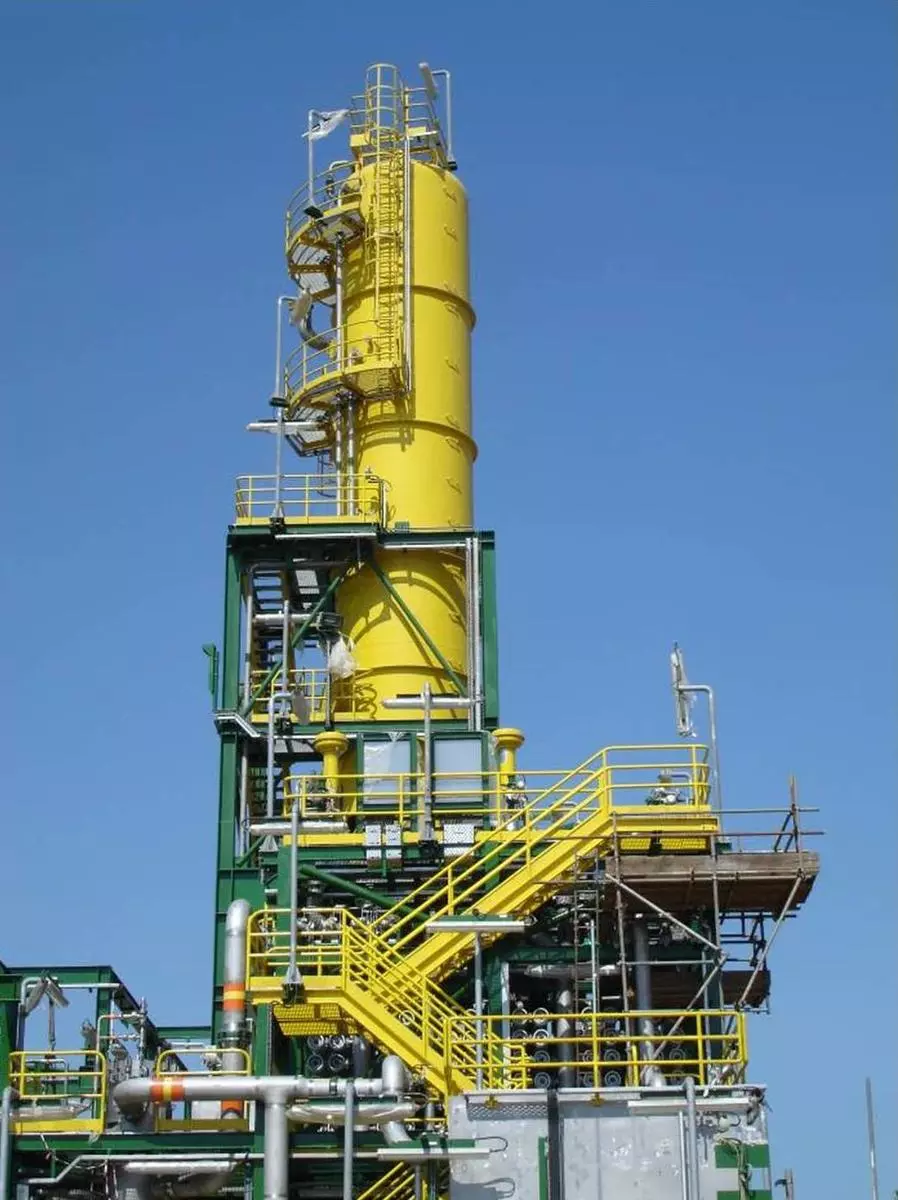Dissolved oxygen in feedwater will cause serious corrosion damage by attaching to the walls of metal piping and other equipment and forming oxides (rust). Dissolved carbon dioxide combines with water to form carbonic acid that causes further corrosion. Most deaerators are designed to remove oxygen down to levels of 7 ppb by weight (0.005 cm³/L) or less, as well as essentially eliminating carbon dioxide.
Veolia Design
The deaerator column is a two-stage vacuum tower designed to receive a chemically treated and filtered flow stream. The feed system is then evenly distributed over the internal diameter of the tower via a header and drilled lateral distribution.
The 1st stage operates under a vacuum and water flows over a bed depth of polypropylene packing. The liquid free-falls over the 1st stage packing creating a high liquid thin film surface whereby the majority of the dissolved gases are removed, along with a relatively small amount of water vapour.
The 2nd stage operates under a slightly lower absolute vacuum and also has a bed depth of polypropylene packing. The liquid free-falls over the 2nd stage packing from the distribution again, creating a high liquid thin film surface, whereby the remaining dissolved gases are removed along with a higher percentage of water vapour compared to the 1st stage.
To further reduce the oxygen content of the seawater, a sodium bisulphite dosing line is provided above the deaeration towers retention basin. The addition of sodium bisulphite acts to scavenge the remainings parts per billion of oxygen in the bottom retention basin of the vacuum tower.
An internal distributor is fitted below the 2nd stage packing support plate to evenly distribute a dilute chemical flow of the O2 scavenger into the seawater falling from the 2nd stage into the vacuum tower sump. This creates excellent mixing of the dosed scavenger chemical.
Benefits:
- Removes dissolved oxygen in order to reduce the rate of corrosion on metallic pipework
- Prevents the growth of slimes and general aerobic bacteria
- Allows higher pipe velocities

Dearator working principal
Deaeration works on the principle that the solubility of gas in water decreases as the water temperature increases and approaches saturation temperature. In the deaerator, water is heated up close to saturation temperature with a minimum pressure drop and minimum vent. Deaeration is done by spraying the feedwater to provide a large surface area, and may involve flow over multiple layers of trays. This scrubbing (or stripping) steam is fed to the bottom of the deaeration section of the deaerator. When steam contacts the feedwater, it heats it up to saturation temperature and dissolved gases are released from the feedwater and vented from the deaerator through the vent. The treated water falls to the storage tank below the deaerator.


